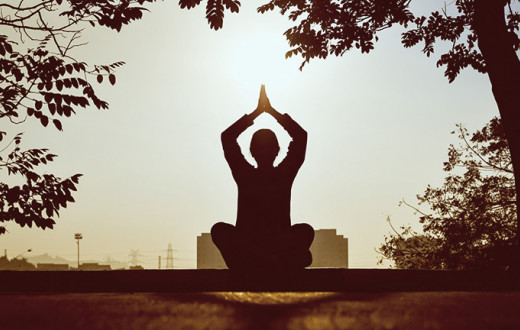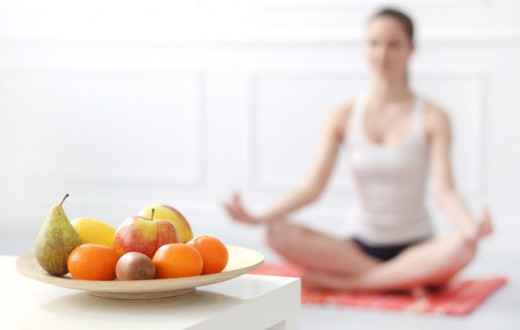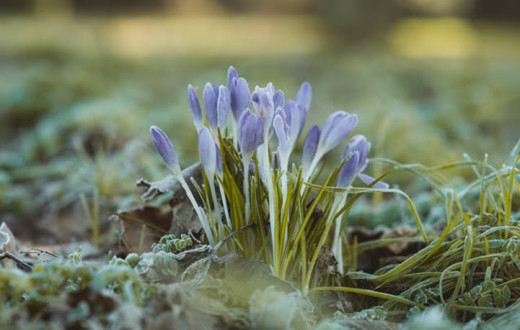By Anuradha Gupta | Posted: July 05, 2019
Ayurveda and Yoga
Ayurveda is a 5,000-year-old medical practice from India that translates to “the Science of Life”. In the United States, Ayurveda is used a Complementary and Alternative Practice, and is gaining popularity as a preventative science. Many want to understand the root cause of illnesses, especially chronic ones, and address them with lifestyle, diet, and natural means; Ayurveda provides a system in which we can do that.
Yoga has been popular for decades in the West, mostly as a fitness regimen, but also as a means for finding peace. Traditionally, Yoga is a Vedic system of Sadhana (spiritual practice), and does not explicitly address ailments, but nevertheless, it is powerful in preventing and healing them.
While Yoga therapy has evolved as a discipline by itself, Ayurvedic professionals use yoga as part of their recommendations, an important tool in their tool kit.
Ayurveda defines health as Swastha. In the words of Gurudev Sri Sri Ravi Shankar, “Swastha or good health means established in oneself, being centered, the ability to handle challenges”. Sri Sri also says, “Yoga is a complete science. It unites the mind, body, spirit and universe, and brings much needed peace in every individual.” These sister sciences are bonded by a similar goal, as they both help in attaining and preserving our health and wellbeing.
Ayurveda: An Individualized Practice
When a Rogi (client) comes to us, Ayurvedic experts do not simply dole out one-size-fits all solutions. Instead, we design individualized protocols. We discuss health goals, current and past ailments, family history, and administer a detailed intake like any health professional would.
We then investigate what the client’s Prakriti (body type) is. A client’s Prakriti is a combination of doshas, or the energy principles that guide our structure, function, affinities, and tendencies.
The three doshas present in human beings and all of creation are Vata, Pitta and Kapha. They are formed by a combination of Panchamahabhutas (the 5 elements). These are:
Vata (V) – Air and Ether
Pitta (P) – Water and Fire
Kapha (K)– Earth and Water
A person can be V, K, P, VP, PV, VK, KV, PK, KP or VPK Prakriti, based on which Dosha dominates at their time of conception. Prakriti never changes. Once a practitioner determines a client’s Prakriti, we then assess which of their Dosha(s) are out of balance. This is called their Vikrati (imbalance) and can keep changing.
We also determine the state of a client’s Agni (digestive and metabolic fire), Ama (toxins) and what Dhatus (tissues), organs, and Srotas (channels) are impacted.
The case of Jane Smith
Let’s look at an example of a client, let’s call her Jane Smith, who is dealing with chronic hyperacidity, irritability, stomach pain, and a dry cough. Let’s say that she has a Vata-Kapha Prakriti.
Jane is young and usually eats sour, oily, pungent food. She works in the Bay Area and has a terrible commute, so she struggles to adhere to meal timings and has a stressful life. She has a Pitta imbalance, which is what we’ll focus on.
In a classic Ayurvedic intake appointment, Jane Doe spends time answering questions about herself; what tastes she craves, what weather she prefers, whether she sweats easily, whether she gets anxious, irritable or depressed with stressors, what her daily routine and diet looks like, and so on.
However, it’s not that simple.
We also conduct different assessments; a 3-fold exam involving observation, touch, and questions to make a clinical impression, a 10-point (Dasavidha Pareeksha) assessment includes Nadi Pareekshan (pulse diagnosis), time (progress of ailment), Sattva (assessment of the mind), diet, and so on. We also conduct an 8-fold exam regarding excretion, and the examination of the tongue, eyes and so on.
With a complete understanding of her nature and her imbalances, we can now embark upon Jane Smith’s journey of self-discovery and healing.
General Ayurvedic Recommendations
It’s time for our final recommendations for Jane Smith.
In Ayurveda, we study the etiology and pathogenesis of our client’s ailments. The uniqueness of individuals makes us inquire why, for instance, in the same house, a viral infection can trigger someone’s asthma as an auto-immune condition, cause a type of fever in another, and have absolutely no impact on a third. Examples of factors that impact treatment are age (e.g., Pitta is predominant in youth) and season (e.g., hyperacidity aggravates during summer).
Our recommendations involve tweaking our client’s lifestyle and diet, and recommending herbs and healing protocols like yoga, meditation, Abhyanga (therapeutic massage), Shirodhara (therapeutic pouring of a warm stream of medicated oil on the forehead) or Marma (a type of therapy). For mild ailments, there is Shamana (pacification) and for chronic ailments, we progress to Shodhana (cleansing therapies like Panchakarma).
Yoga as an Ayurvedic Tool
Yoga is part of our toolbox. We employ all of the traditional 8 limbs of Yoga, including Asanas, Pranayama and meditation. We also use chanting, Chakras (subtle energy centers) and Nadis (subtle channels). For instance, a client with hypothyroidism could focus on the throat chakra with asanas, chants, and enhancing creative expression.
Here is a simple guide on how Vata, Pitta and Kapha manifest and suggestions on yoga to help stay balanced or handle imbalances.
Note: Different doshas dominate during different seasons. Vata suggestions are good for attaining balance in Vata season (fall), Pitta in summer, and Kapha in late winter and spring.
Vata
Vata people are quick, spacey, fickle, creative, and enjoy movement. For example, they might start a company with their creative ideas. Examples of imbalance include dryness, anxiety, constipation, and insomnia, and we recommend that their yoga should be regular, slow, warming, grounding and at less than their capacity.
We ask them to hold poses and encourage on-the-ground Vinyasas (sequences) like Padmasadhana (a meditative sequence taught in the Art of Living), balancing poses like mountain or tree pose, spinal twists (with a focus on colon health and kindling Agni), gentle backbends, forward bends, and a prolonged Shavasana (corpse pose). For breathwork, we ask them to do deep, calming breathing like full yogic breathing or Nadi Shodhan (alternate nostril breathing).
Pitta
Pitta people tend to be driven, ambitious, intellectual, and courageous, with a medium build and measured speech. For example, a Pitta person may be the CEO or part of the senior management of a company. Examples of imbalance are anger, inflammation, and hyperacidity.
We recommend cooling, relaxing, effortless yoga before sunrise, meditative Padmasadhana, more forward bends, slow, meditative sun salutations, and spinal twists. For breathwork, we suggest Sheetali (cooling breath), Chandra Bhedan (left nostril breathing) followed by Nadi Shodhan and Brahmari (Bee Pranayama).
Kapha
Kapha people are relaxed, laid back, steady, loving, and nurturing. For example, a Kapha person would help maintain and run a company. Examples of imbalance are stagnation, obesity, lethargy, and depression.
We recommend active yoga, including Vinyasas like sun salutations, standing and inverted yoga, and changing one’s routine frequently. For breathwork, we suggest Kapal Bhati (breath of fire), and Surya Bhedana (right nostril breathing) followed by Nadi Shodhan and Bhastrika (bellows breath).
Some clients have a sedentary lifestyle, while others are too active. A Vata client might overdo exercise and present with osteoarthritis, or a Pitta client may go overboard on a competitive sport and develop plantar fasciitis; they need to slow down.
Then there are orientations of the mind; Sattva (balanced), Rajas (ambitious) and Tamas (dull). A client may have too much Sattva, and as a result, they may feel low or disconnected. They need some Rajas (to let their hair down), and we suggest they play upbeat music with yoga or add Zumba or a group yoga practice.
We do ask all clients, especially those with ailments like hypertension, to take clearance from their physician, and if they are beginners, to work with a trained Yoga professional
Final recommendations for Jane Smith:
For Jane Smith’s yoga routine, we could suggest Pitta-cooling Pranayamas, focusing on Yoga Nidra (relaxation), and avoiding midday or hot yoga. Specific Asanas suggested could be Padmasan (lotus pose), Vajrasana (throne pose), Paschimottanasana (seated forward bend), Bhujangasana (cobra pose), Pavanmuktasana (wind releasing pose), and twists like Ardha Matsyendrasana (half spinal twist).
A few other suggestions include a diet favoring sweet, bitter and astringent tastes, cutting down on oily, sour, pungent, processed foods, drinking coconut or coriander water or pomegranate juice, sleeping on time, waking early for a short yoga and breathwork session, eating regular meals and some herbs such as Mahathikthakam Ghritam and Yashtimadhu, and incorporating a stress-alleviating meditation practice into her daily routine.
Conclusion
In our practice of Ayurveda, we’ve observed that people who’ve been practicing yoga long-term have fewer chronic ailments, are easier to bring back into balance, and have higher Sattva Bala (Mental Strength). Yogis tend to be aware and alert, and it is a treat to work with them (though we value all our clients). Indeed, Heyam Dukhham Anagatam--Yoga prevents future pain--referring not just to asanas, but the entire spiritual practice.
Most Ayurveda professionals practice yoga daily, and we highly recommend that people incorporate yoga into their everyday lives.
Many of us are Jane/John Smiths, a bit lost, and some of us don’t even know it. Self-inquiry and Swastha are gateways to happiness. Personally, the combined practice of Ayurveda and yoga has helped me in my ongoing journey from Jane Smith to…myself!
This content on the Art of Living blog is not intended to be a substitute for professional medical advice, diagnosis or treatment. Always seek the advice of your physician, or other qualified health providers with any questions you may have regarding a medical condition. Any links to third party websites is provided as a convenience only and the Art of Living blog is not responsible for their content.
With Inputs from Dr Shriram Sarvottam, E-RYT200, who has been teaching yoga for over two decades, E-RYT200 and is a senior Sri Sri Yoga Teacher.
Anuradha Gupta is an Engineer, MBA and Ayurvedic Wellness Counselor. She has a corporate background and volunteers for Art of Living and other nonprofits.





























